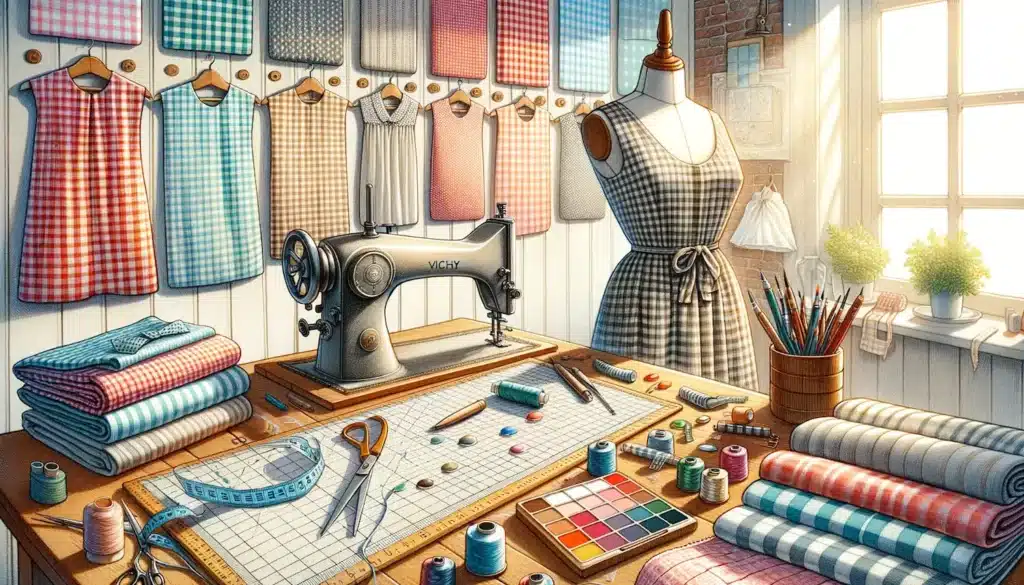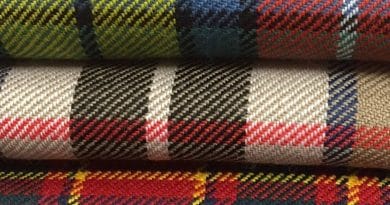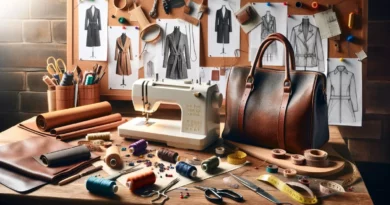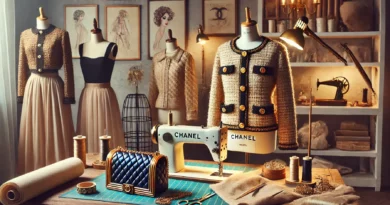The fascinating history of Vichy fabric
Gingham fabric is more than just a check pattern. It’s a timeless symbol that has crossed eras, cultures and even industries. From picnic tables to haute couture, this versatile fabric has a fascinating history that deserves to be told.
In this article, we dive into the captivating world of Vichy, exploring its origin, evolution and indelible impact on fashion and global culture. You’ll discover how this fabric, once associated with picnic tablecloths and kitchen aprons, rose through the ranks to become a favorite choice of fashion icons like Brigitte Bardot!
We’ll also look at how the great couturiers have reinvented and revitalized this classic pattern, propelling it onto the catwalks of international fashion.
Whether you’re a fashion enthusiast, a history buff or simply curious, this retrospective offers you a fascinating journey through time and space, discovering Vichy fabric. So get ready to be surprised and inspired by the richness and versatility of this emblematic fabric!
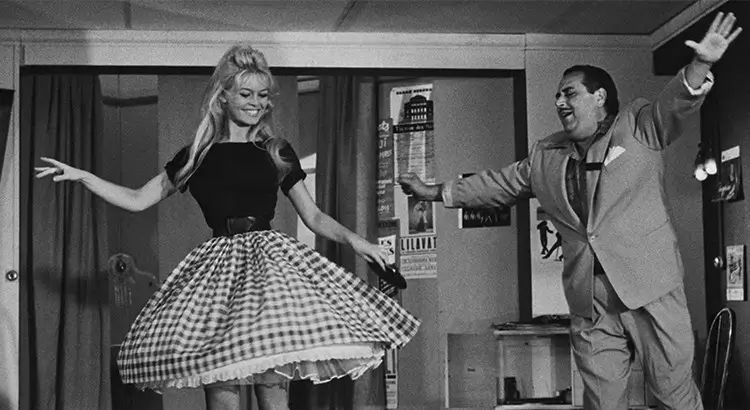
The origins of gingham fabric
This fabric, with its distinctive check pattern, has origins that go back many centuries. Although its name is closely associated with the French spa town of the same name, check fabric itself has much deeper roots.
As early as the 14th century, similar fabrics were being manufactured in Flanders and Burgundy. But it was in the 19th century that the fabric really took off in France.
The rise of Vichy fabric in France is largely attributable to Napoleon III. Passionate about industrial development, the emperor encouraged textile production during his visits to various regions of France. During a stay in Vichy, a spa town popular with high society, Napoleon III visited the Grivats spinning mill in nearby Cusset. Impressed by the quality of the fabric, he helped popularize it at the imperial court.
But what really sets this fabric apart is its manufacturing technique. Unlike other patterned fabrics, Vichy is a “woven-dyed” fabric. This means that the threads are dyed before weaving, giving the fabric exceptional quality and durability. This technique also allows for an identical pattern on both sides of the fabric, making it reversible.
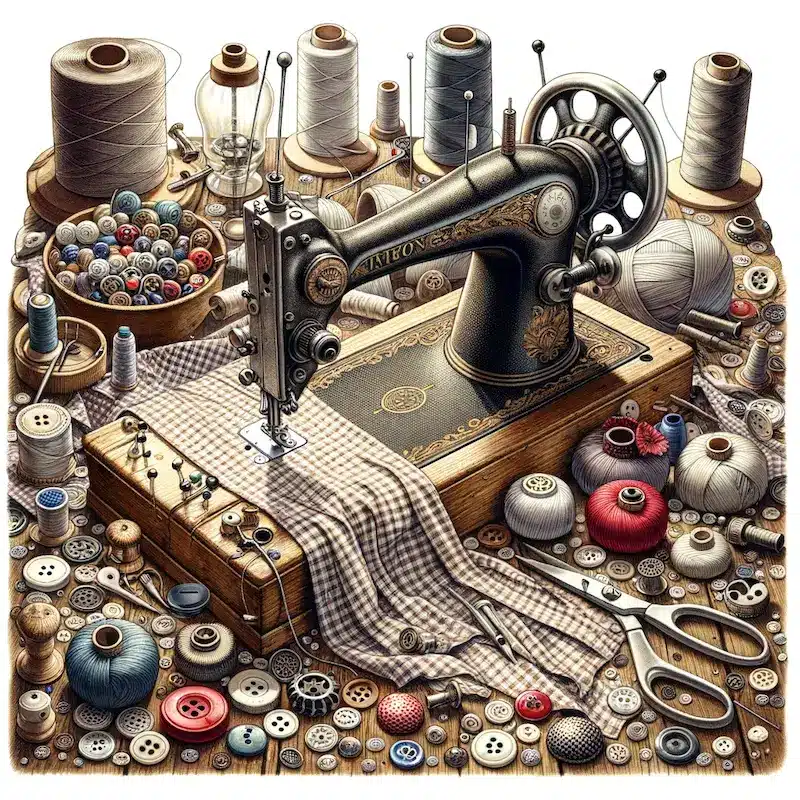
Genuine Vichy: Woven Dyed
One of the most fascinating aspects of Vichy fabric is its unique manufacturing technique, known as “tissé-teint”. This method differs considerably from that of printed fabrics, where the pattern is applied to the fabric after weaving. In the case of Vichy, the yarns are dyed before weaving, giving the fabric exceptional quality and durability.
The weave-dye process begins by dyeing the yarns in the desired colors. These yarns are then woven by alternating dyed and white yarns, in both weft and warp. This alternation creates a check pattern that is identical on both sides of the fabric, making it reversible. This feature is particularly appreciated in the manufacture of garments and household articles. It offers greater flexibility in fabric design and use.
But weave-dye is not just about aesthetics; it also has deep cultural significance. In Indonesia, for example, the check pattern is often associated with dualistic concepts such as good and evil. Gingham, with its half-tone checks, symbolizes the path of balance. A notion that transcends cultures and eras.
In short, genuine Vichy fabric is a masterpiece of textile craftsmanship. Its “woven-dyed” manufacturing method not only ensures its quality and durability. But it also gives it a symbolic richness that makes it much more than a simple check pattern.
Vichy and fashion
Vichy fabric has a rich and complex history in the world of fashion. Long associated with picnic tablecloths and kitchen aprons, the check pattern enjoyed a renaissance in the 1950s thanks to Brigitte Bardot. The actress and fashion icon wore a pink and white Vichy dress for her wedding in 1959, instantly propelling this fabric to the forefront of the fashion scene.
But Bardot wasn’t the only one to adopt this pattern. Renowned couturiers such as Azzedine Alaïa and Louis Vuitton also incorporated Vichy into their collections, giving it new life and meaning. Alaïa, for example, used the pattern in a bold collection that mixed Vichy with more modern, avant-garde elements. Louis Vuitton, meanwhile, used Vichy in reference to Maasai warrior outfits for its Spring-Summer 2012 collection.
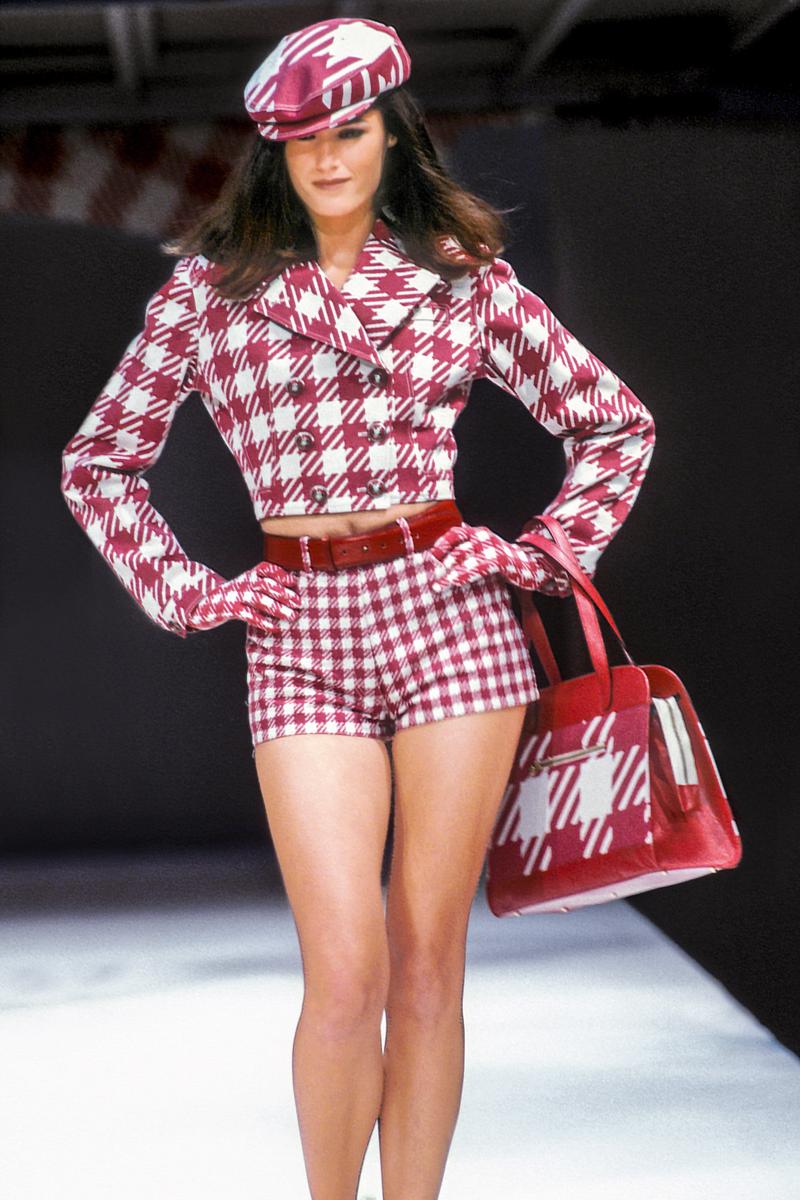
Gingham has also found its way into ready-to-wear, with brands like Zara and Sezane offering pants, blouses and dresses in this pattern. Gingham has become a versatile choice that can be both chic and casual, which explains its enduring popularity.
What’s particularly interesting is how Vichy transcends genders and generations. It’s as at home on a light summer dress as it is on a man’s button-down shirt, making it a truly universal choice in the fashion world.
Great Couturiers and Vichy
Vichy fabric has been adopted and reinvented by some of the greatest names in haute couture, confirming its status as a fashion icon. Azzedine Alaïa, for example, was particularly influenced by the pattern. During a visit to Paris in 1990, he discovered Vichy on the awning of the Tati store and was immediately inspired. He then created a bold collection that blended Vichy with more contemporary elements, giving the fabric a new dimension and relevance.
Louis Vuitton also made a nod to Vichy in its Spring-Summer 2012 collection. The check pattern was enlarged and used in red and blue, in reference to traditional Maasai warrior outfits. This innovative use of Vichy showed how a fabric traditionally associated with simplicity and the countryside could be transformed into a bold fashion statement.
Alexis Mabille, another big name in fashion, also played with Vichy in his 2013 collection. He used the pattern in pink and white, but paired it with black leather elements to create a “kawai rock” look, fusing diverse influences into a single piece.
These designers not only confirmed Vichy’s status as a viable fashion choice. But they have also shown how this versatile fabric can be adapted and reinvented to meet the changing tastes and trends of contemporary fashion.

Diverse uses for Vichy fabric
Gingham fabric is incredibly versatile, which explains its presence in many areas outside fashion. As well as being a popular choice for clothing, Vichy is also highly prized for interior decoration. From curtains to cushions to bed linen, this check pattern adds a touch of retro charm to any space.
But it doesn’t stop there. Gingham is also used in cultural and traditional contexts. In Indonesia, for example, this fabric is at the heart of the binarities of the universe, symbolizing good and evil. In Africa, the Maasai and Suburu tribes incorporate it into their traditional costumes. In Japan, it is used to wrap Buddha statues when a child has died, adding a spiritual dimension to this versatile fabric.
Vichy has even found its way into the art world. The artist Julian Schnabel used the pattern in a series of works, in turn inspiring the great couturier Azzedine Alaïa. This versatility makes Vichy an ideal choice for many creative projects, whether fashion, interior design or even art.
In short, Vichy fabric is much more than a simple check pattern. Its versatility and ability to adapt to a variety of uses make it a universal choice that transcends cultural and functional boundaries.
Vichy in popular culture
Vichy fabric has left an indelible mark not only on the world of fashion and design, but also on popular culture. One of the most emblematic moments of this influence was undoubtedly Brigitte Bardot’s wedding in 1959. By choosing a Vichy dress for the occasion, Bardot transformed this humble fabric into a symbol of glamour and style, catapulting it into the collective consciousness.
But Vichy doesn’t stop there. It was also adopted by music icons such as David Bowie, who posed in pink Vichy shorts, affirming the pattern’s bold, avant-garde character. The fabric has even made its way into cinema, appearing in films and TV series as a costume element that often evokes nostalgia, simplicity or even irony.
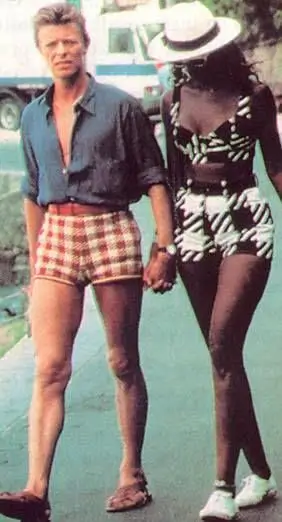
In literature and the media, Vichy is often used to symbolize themes such as innocence, youth or tradition. It appears in novels, short stories and magazine articles. Often to evoke a bygone era or to create a contrast with more modern or complex elements.
Vichy also has a presence in social media. It is often associated with vintage or retro aesthetics. From influencers to fashion bloggers, many choose this pattern for its timeless charm and versatility.
In short, Vichy fabric has spanned eras and genres, making a lasting and significant mark on popular culture. Its ubiquity testifies to its universality and ability to capture the public’s imagination.
How to sew Vichy fabric?
Preparing the fabric
Before you start, be sure to wash and iron your gingham fabric. This will eliminate any potential shrinkage and make sewing easier.
Choice of pattern
Gingham is available in a variety of check sizes and colors. Choose a pattern that suits your project. For example, smaller checks are often better suited to clothing. Whereas larger checks may be more appropriate for tablecloths or blankets.
Aligning checks
One of the challenges of sewing gingham is aligning the checks. For a successful result, take the time to align the patterns before cutting and sewing.
Sewing techniques
Use a colored thread that blends into the fabric so that seams are less visible. A medium-sized needle and a straight stitch are generally sufficient for most projects.
Finishing
For edges, topstitching or a rolled hem adds a professional touch. You can also use a zigzag stitch to prevent the fabric from fraying.
Additional tips
- Use pins to hold fabric in place while sewing.
- Always try out a piece of fabric before starting your main project.
By following these steps, you can create gingham pieces that are not only beautiful, but also durable and well-made.
FAQ about Vichy fabric
What is gingham fabric?
Vichy fabric is a checked cotton fabric that can vary in size and color. It is best known for its check pattern, which is identical on both sides of the fabric.
How is Vichy fabric made?
Vichy is a “woven-dyed” fabric, which means that the threads are dyed before weaving. This technique gives the fabric exceptional quality and durability.
Is Vichy fashionable?
Absolutely! Vichy has been adopted by many top designers and is also popular in ready-to-wear. It is considered a versatile and timeless fashion choice.
Does Vichy have other uses besides fashion?
Yes, Vichy is also used in interior design, art and even in cultural and spiritual contexts. Its versatility makes it a popular choice for many creative projects.
Why is Vichy so popular?
Vichy was popularized by icons such as Brigitte Bardot and David Bowie. The fabric is often associated with themes of nostalgia, innocence and tradition in literature and the media.
Is Vichy durable?
Due to its “woven-dyed” manufacturing method, Vichy is a durable fabric that stands the test of time. This makes it an ecological choice for those looking to reduce their carbon footprint.
Gingham fabric is much more than a simple check pattern. It is a symbol of versatility and universality that has spanned eras and cultures. From haute couture to everyday wear, through to its impact on popular culture, Vichy continues to captivate and inspire. Its longevity and cultural resonance make it a timeless choice that never ceases to surprise.

